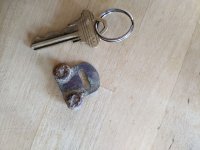Iron Buzz
Bronze Member
- Oct 12, 2016
- 1,722
- 2,347
- 🏆 Honorable Mentions:
- 1
- Detector(s) used
- XP Deus, Minelab Equinox 800
- Primary Interest:
- Metal Detecting
I don't understand noise cancellation. Actually, there are two things that I don't understand about it.
First... the manual says that it finds the frequency with the least noise. But how does that work with multi-Q? How can it select one frequency when it runs on multiple frequencies?
Second... if I run noise cancel multiple times without moving, or even moving the coil, it seems to select a different frequency every time. Seems random. How does that work?
First... the manual says that it finds the frequency with the least noise. But how does that work with multi-Q? How can it select one frequency when it runs on multiple frequencies?
Second... if I run noise cancel multiple times without moving, or even moving the coil, it seems to select a different frequency every time. Seems random. How does that work?







